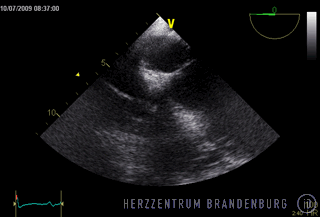Cardiac device lead extraction
Unfortunately, an increase in the number of patients having cardiac devices fitted - for example pacemakers and ICDs - has gone hand in hand with an increase in the rate of complications observed. Infections of the control units and leads are often life-threatening due to the fact that the leads are positioned inside the great vessels and reach all the way into the heart.
Contact
What is device lead extraction?
The term "device lead extraction" refers to the removal of implanted cardiac devices such as pacemakers or ICDs following complications that may include infection. Repeated device or device lead extraction is usually associated with a considerable increase in the risk of infection.

Another reason for lead extraction is damage to the pacemaker/ICD control unit or its leads, and many patients will need to have the control units and leads extracted after a number of years.
At the Brandenburg Heart Center we are able to offer treatment options even for these severe complications. Our Center is one of only a small number within the Berlin/Brandenburg area that is capable of offering safe device lead extraction using catheter-based techniques for patients with pacemakers and ICDs. As a result we receive referrals from the entire Berlin/Brandenburg area, with cases including patients with infections in implanted devices, complex pacing system malfunctions and broken leads.
When does lead extraction become necessary?
At the start of treatment it is important to establish the exact extent of any infection present. In most cases, transesophageal echocardiography (TEE) will be used to establish the extent and size of any vegetation, as well as determining whether any of the heart valves are also affected. Further treatment steps must be determined on a case-by-case basis, and require close cooperation between the Interventional Cardiology and Cardiac Surgery Departments.
What happens during lead extraction?
Device lead removal will first be attempted by applying constant gentle traction. Special extraction devices have been developed to assist mechanical extraction.
The buildup of scar tissue over many years often results in the device leads becoming firmly anchored to the walls of the blood vessels or even the tricuspid valve. If this occurs, lead extraction becomes more difficult
and may require the use of a laser to help remove the leads. An encimer laser usually succeeds in removing the scar tissue and freeing the lead.
In certain cases, it may only be possible to remove the lead once it has been broken up into pieces, with the individual pieces having to be removed using specially-developed catheters introduced via an additional entry site in the groin. These highly complex procedures require the use of state-of-the art equipment.
Due to the close cooperation that exists between the Interventional Cardiology and Cardiac Surgery Departments, prompt surgical intervention is possible at any point should complications develop.

